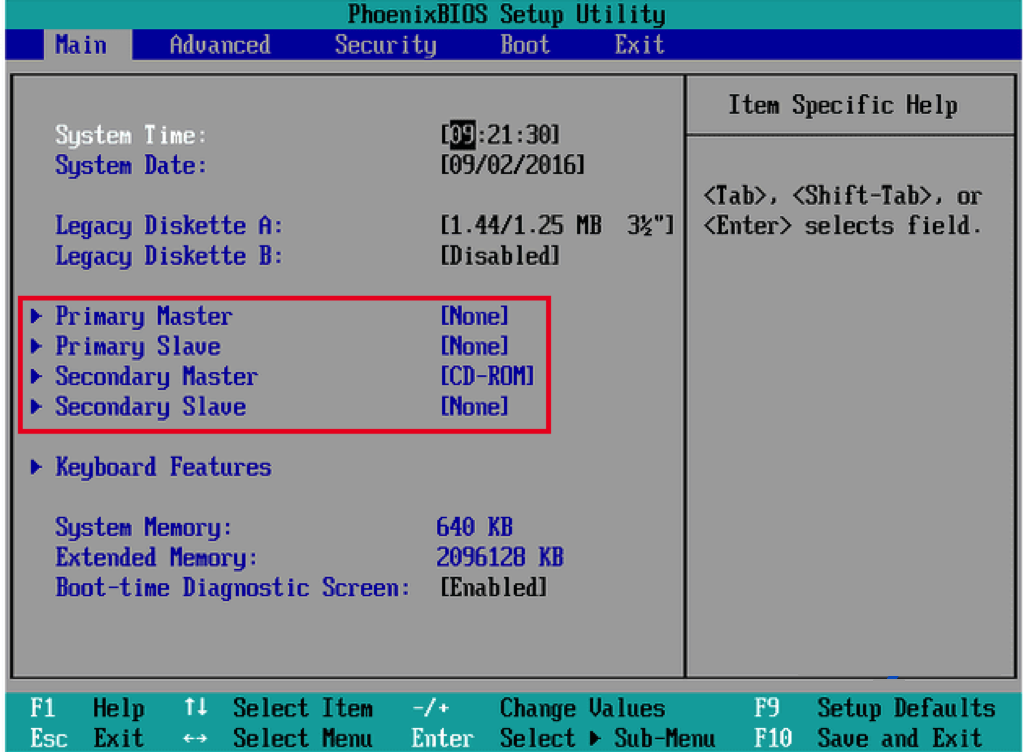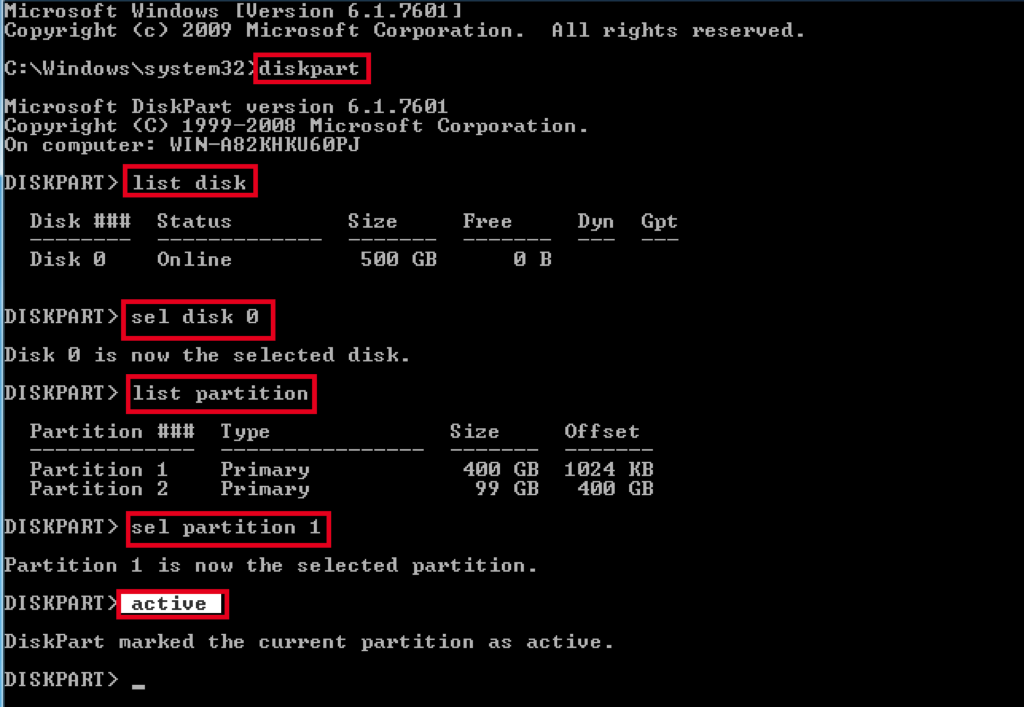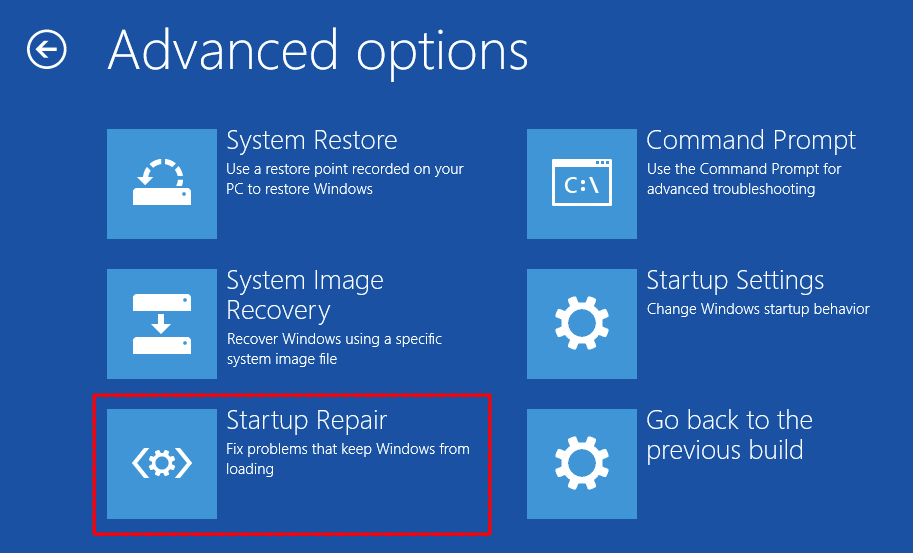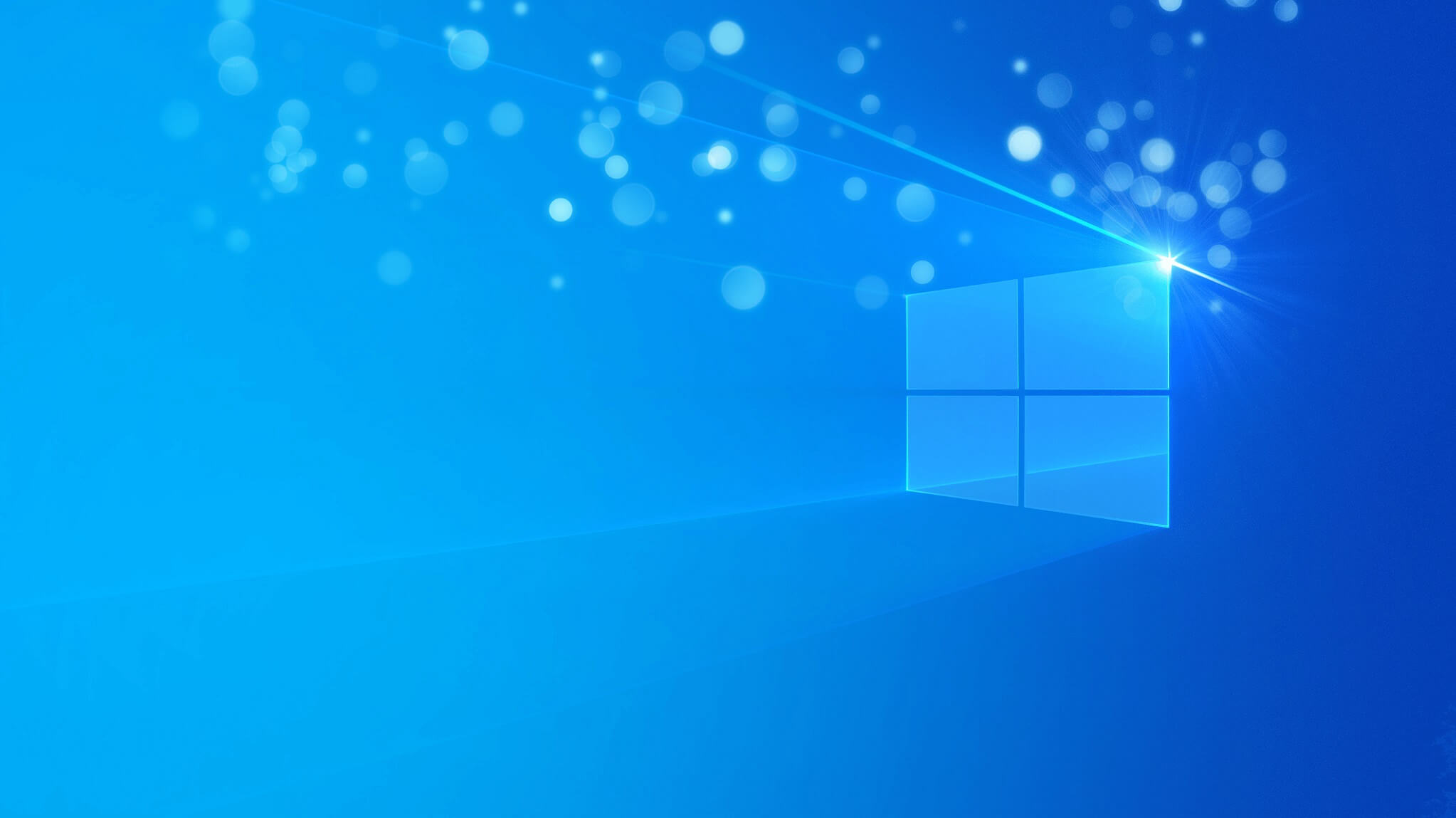How to Fix the ‘Missing operating system’ Error in Windows
Normally, every time you click the power button on your laptop, your system’s BIOS settings detect the hard disk, load the partition corresponding to the Windows operating system, and provide you with the system login page. But this is not always going to happen. There are many users like you who, when they turn on their system, instead of the login screen, face a black screen containing the error Missing Operating System in Windows or Operating System Not Found, and they lose all enthusiasm needed to start the working day.
There are many reasons that can cause the issue of Missing Operating System in Windows. Incorrect BIOS configuration, malfunction of the hard drive, and the failure of some files necessary to boot the system are among the most important ones, each of which has its own solutions and can be solved.
The operating system is the heart of your laptop or computer and it allows you to interact with your system hardware Windows not being recognized is the worst thing that can happen to a Windows user. But there is no need to fear or worry. The Operating System Not Found error has many reasons and we try to provide you with all practical and useful solutions to solve this error so that you can get through this daunting process as quickly as possible.
If you are a big fan of Windows and you need a powerful and secure server to do a project or any other work, we recommend that you visit our Windows virtual server purchase page and choose among the wonderful plans that are available for you. We have presented, choose the best option for you, and start your successful path.
Now let’s check the reasons for not finding the Windows operating system and how to fix the Missing Operating System error in Windows:
Table of Contents
The main reasons for the Missing Operating System error in Windows
1. Check the status of the hard disk.
2. Select the correct boot device.
3. Rebuild the BCD.
4. Repair the MBR.
5. Activate the primary partition.
6. Use the auto repair feature.
7. Enable/disable UEFI secure boot.
8. Reset BIOS settings.
9. Reinstall Windows.
The main reasons for the Missing Operating System error in Windows
If you turned on your Windows system and after waiting for a few seconds, you encountered a black screen with the message Missing Operating System, there are probably issues that prevented your Windows operating system from booting.
The following issues are among the most important reasons that cause the Operating System not to find problems in Windows:
- Incorrect BIOS configuration
- MBR corruption
- Failure to recognize the hard drive by BIOS
- Cable failure between BIOS and hard disk
- BCD error
- Hard disk failure
- Inaccessibility of Windows boot files storage partition
- Activation of the wrong partition instead of the correct partition containing the MBR
All these reasons have their own solutions. Our recommendation is to restart your system by pressing Ctrl+Alt+Del key combination before doing anything. Then, if you see that the problem of the Windows operating system not being recognized is not solved, try other solutions.
We are going to provide you with the solutions to the problem of Missing Operating Systems in Windows with all the details. So, if you want to skip this stressful step as quickly as possible and access your Windows system, don’t miss the rest of the article.
1. Check the status of the hard disk.
Failure to recognize the hard drive by BIOS is one of the most important reasons for Windows being lost. So, if your system disk is not recognized by BIOS, all files, especially those related to the Windows operating system, become inaccessible and cannot be used to load the operating system and read and write data.
By following the steps below, you can make sure that the hard drive is recognized by the BIOS:
Press and hold one of the F12 or F10 buttons and simultaneously press the system power button to enter the BIOS settings.
Find the section related to Primary Master, Primary Slave, Secondary Master and Secondary Slave through the Main tab.

If all these options were in the None or Not Detected state, you can be sure that the BIOS is not able to detect the system hard disk. In the article on how to solve the problem of hard drive not being recognized in Windows, we have reviewed all the necessary solutions to solve this problem, which you can get help from if you wish.
2. Select the correct boot device
Usually, users encounter the Missing Operating System error in Windows 10 when the appropriate boot device is not selected to start the system. For example, if a USB or CD drive is preferred instead of a hard disk, the operation of identifying the operating system will have a problem, and as a result, instead of Windows, a black screen with the message Operating System Not Found will open.
In order to include the correct order to start the operating system, you need to enter the BIOS and make the necessary settings.
To do this, just follow the steps below:
Turn on your system and press one of the F1, F2, del, or ESC keys to enter BIOS depending on your device model.
After entering the BIOS, go to the Boot tab.
From among the devices in the boot list, use the up and down arrow keys to place the cursor on the Hard Drive and then press the + button to bring the Hard Drive device to the beginning of the boot list.

Then, press F10 to save the change and exit the BIOS environment.
Restart the system again and see if Windows loads properly.
3. Rebuild the BCD.
(Boot Configuration Data (BCD) contains the list of all the files and elements necessary to start the system. Now if this file contains damaged or incomplete files or the BCD file itself is disabled, the process of starting the Windows system will have problems.
To resolve this issue you have a bootable device containing a copy of Windows installed on your device. So, if you have prepared a Windows bootable flash drive for your system, it’s time to perform the following steps:
Connect the desired device to the system and after Windows setup opens, click on Repair your computer.
* If this page does not open, it is likely that the boot priority is with another device, to change it, just go to the BIOS and from the boot menu, give priority to the desired USB flash drive or CD, and then restart the system.
After the recovery environment opens, proceed as follows:
Troubleshoot > Advanced options > Command prompt
After the command prompt opens, run the following command:
bootrec /rebuildbcdRun the exit command to exit the command line.
Now restart the system to see if the problem is solved or not.
4. Repair the MBR
MBR is the method used for hard disk partitioning and contains important information such as partition table and boot code. Now, if a wrong operation or a virus attack causes MBR damage and thus, the special boot code located in the first sector of the hard disk is also damaged, Windows startup will be accompanied by the Missing Operating System error.
Click What is a data center?
Just like the BCD recovery method, you need a bootable USB flash drive with Windows installed on your system to repair or rebuild the MBR. After you get this device, follow the steps below:
Insert the flash drive or CD into your system.
Wait for windows setup to open and then click on Repair your computer.
After the recovery environment opens, proceed as follows:
Troubleshoot > Advanced options > Command prompt
You can repair the MBR by running the following command:
bootrec /fixmbr
But you can complete this repair and reconstruction process by running the following commands, which are completely optional, and you can repair the MBR only with the above command:
After executing these commands, run exit and then restart your system and see if the Missing Operating System error in Windows is solved or not.
5. Activate the primary partition.
If you still haven’t managed to solve the Operating System Not Found error in Windows by performing the above methods, the main partition containing Windows is probably disabled because when Windows is running in Legacy BIOS + MBR mode, the system or boot partition must be in active mode. It should be so that the MBR can transfer boot operations to the boot manager and find Windows.
We will use the diskpart tool to solve this problem. So if you are ready, follow the steps below to activate the main system partition:
Connect the bootable flash or CD containing the Windows file to the system.
After the Windows setup window opens, click on Repair your computer.
After the recovery environment opens, proceed as follows:
Troubleshoot > Advanced options > Command prompt
Run the following command to enter the disk partitioning console:
diskpartThen run the following command to see the list of partitions:
Find the number of the disk containing the operating system. If you have only one disk, you must enter the same number 0.
After finding the desired disk number, run the following command to select the desired disk (in this example, since we only had one disk, we put the corresponding number, i.e. 0):
select disk 0
Then it’s time to check the partitions of this disk. Then run the following command:
list partitionFrom the list of partitions, find the partition number that contains the Windows operating system (usually it contains the Primary, Reserved or Boot field) and include it in the following command to select that partition:
select partition 1
Then activate it by running the following command:
active

After you complete these steps, restart your system and see if the problem of Windows not being found is solved.
6. Use the auto repair feature.
Windows has a built-in feature called Startup Repair that automatically detects and repairs all system startup problems. To use this feature, you need a disk containing the Windows file installed on your system, which can be a bootable flash or CD/DVD.
So if you have prepared this disk, perform the following steps:
Insert the flash drive or CD/DVD containing Windows into the system and boot your system with it.
After selecting language, time and keyboard input, click Next.
From the Windows startup window, click Repair your computer.
First select the Troubleshoot option and then the Advanced option.
Then select the Startup Repair option to start the troubleshooting and repair process automatically.

After you see this output of this step, restart your system and see if the Missing Operating System error in Windows 10 is fixed or not.
7. Enable/disable UEFI secure boot
According to the reports of some Windows users, activating or deactivating UEFI secure boot can also cause Windows to be lost and as a result an operating system wasn’t found error in Windows. In fact, the UEFI firmware that comes with the system is in active mode, and the activation of this feature is compatible with some systems, but causes disruption in others.
So by changing the current status of UEFI secure boot in your system, you will know whether this feature is enabled with your system or not. Then activate or deactivate it accordingly.
Turn on your system and press the appropriate BIOS key of your system such as F10, F12 or esc to enter the BIOS settings.
Select the Security tab.
Reverse the Secure Boot mode. (If it was enabled, disable it and if it was disabled, enable it)

Restart your system and check the boot status of Windows.
8. Reset BIOS settings
If your system is still unable to recognize Windows, you can also try the BIOS reset method. This is a very simple solution and is often useful for troubleshooting.
You can restore the BIOS settings to the original state with the following steps:
Turn on your system and press the appropriate BIOS key of your system such as F10, F12 or esc to enter the BIOS settings.
Check all the tabs and look for an option containing Reset to default or Setup default.
Then, select it and press Enter and reject the confirmation message by selecting yes.

Finally, select Exit saving changes from the Exit tab.
Then, check if your Windows boots up successfully or not.
9. Reinstall Windows
If the above solutions don’t work, maybe it’s time to install a new Windows on your device. Although executing this method deletes all the data in the main Windows installation partition, when you cannot access these data and files, there is no other way.
We have prepared complete tutorials for installing Windows 7, Windows 8, Windows 10, and Windows 11, with the help of which you can complete this process easily and without any errors.
The above methods are among the most widely used and effective solutions to solve the Missing Operating System error in Windows, if you execute them in order and carefully, you will surely solve your problem easily.
Conclusion
There are many reasons for the Windows not being found error when starting the system, the most important of which are incorrect BIOS configuration and hard drive failure. In this article, we tried to provide effective solutions for each of these reasons so that you can go through this daunting process as quickly as possible. If, apart from these methods, you know of other methods that can work to solve this problem, we will be happy to share them with us in the comments section so that we can work with each other to find more comprehensive and complete solutions. Allow users.











